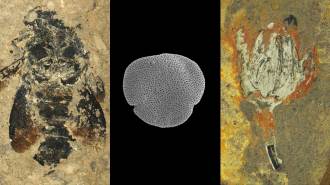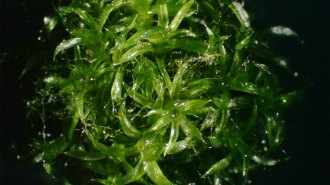Arizona scientists propose a new scenario to explain why perfectly good, everybody’s-equal, bisexual flowers evolve forms with different genders.
A genetic goof that adds extra sets of chromosomes, or polyploidy, could trigger the split into gender forms, suggests Jill S. Miller, now of the University of Colorado in Boulder. She’s studied the wolfberries, or Lycium, but other plants may have similar stories, she and Lawrence Venable of the University of Arizona in Tucson argue in the Sept. 29 Science.
“It’s something people hadn’t really thought about,” says plant-gender specialist Lynda Delph of Indiana University in Bloomington. Parts of the scenario had been suggested, but no one had connected them, she notes.
Plants deploy sex organs at least nine ways: bisexual flowers only, male and female flowers on the same plant, all-female plants mixed with bisexuals, and so on. “If you want to study gender, you should study plants,” Miller says.
Among the 13 North American wolfberry shrubs, three are gender dimorphic. Each plant has either all female flowers or bisexual flowers that tend to function as male. When Miller devised a family tree for Lycium, she found that the three gender-dimorphic species sprouted from the same branch.
Others had proposed that dimorphic species have arisen where self-fertilization occurred and weakened the plants. So, Miller at first predicted that close relatives of dimorphic Lycium species can fertilize themselves.
To check this in Lycium species, she dusted specimens with either pollen from the same plant or from another of the same species. She found that close relatives of the dimorphic species can’t fertilize themselves.
After much puzzlement, Miller realized that polyploidy shows up only in her gender-dimorphic species. Scientists had observed that polyploidy can permit self-fertilization. Thus, Miller suggests that if a species happens to become polyploid, it avoids the ills of inbreeding if it also evolves gender dimorphism.
Although data on dimorphism and polyploidy are sparse, Miller found a correlation between the two traits in strawberries, astilbe, and 10 other genera.
Delph notes that other scientists had been troubled by the earlier hypothesis because dimorphism arose in some self-incompatible lineages. “What this paper’s done is solve this mystery,” she says.






